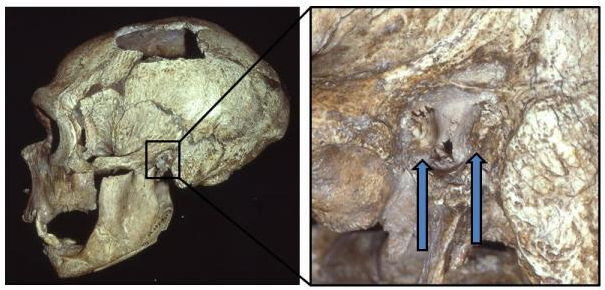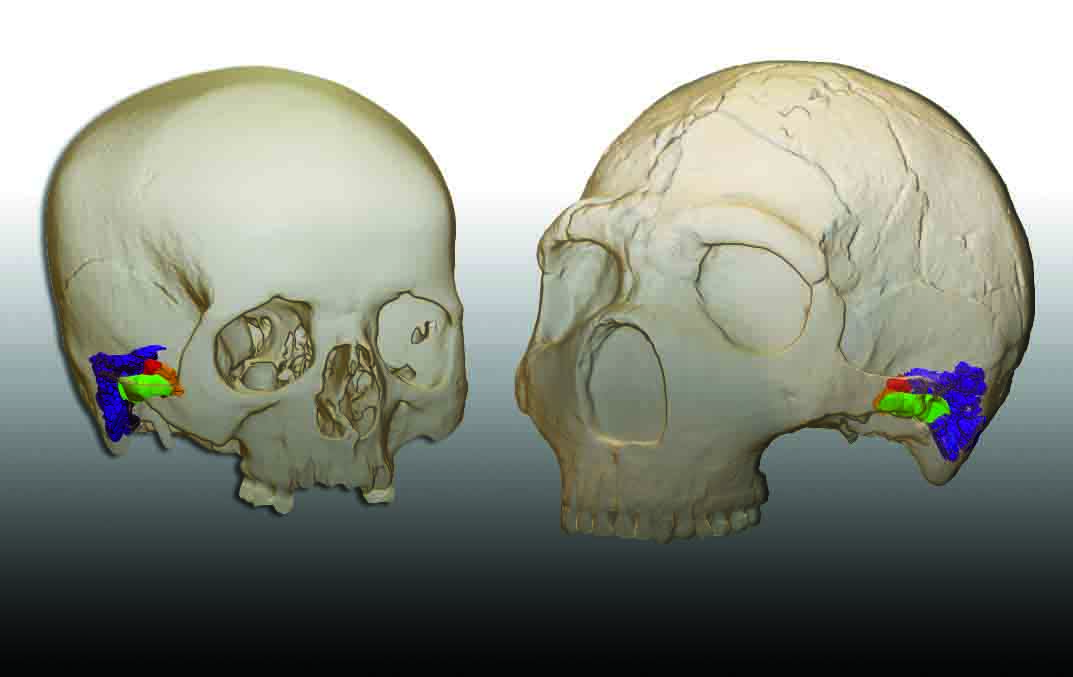
ST. LOUIS, MISSOURI—CNN reports that bony growths associated with the condition known as “surfer’s ear” have been detected in the ear canals of about half of the Neanderthal skulls examined by a team of researchers led by Erik Trinkaus of Washington University in St. Louis, and Sébastien Villotte and Mathilde Samsel of the University of Bordeaux. The presence of the growths in Neanderthals suggests the ancient hominins had the sophisticated technology necessary to exploit aquatic resources more often than previously thought, since the condition is usually found in people who frequently participate in water sports in colder climates. Few fish and aquatic mammal remains have been found at Neanderthal archaeological sites, however. The researchers suggest this may be because many Neanderthal coastal sites could now be underwater. Trinkaus said the study “reinforces a number of arguments and sources of data to argue for a level of adaptability and flexibility and capability among the Neanderthals, which has been denied them by some people in the field.” To read about Neanderthals' use of eagle talons as jewelry, go to "Neanderthal Fashion Statement."










